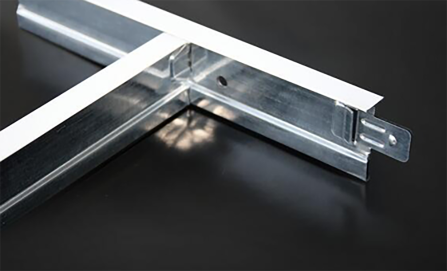Dec . 12, 2024 02:31 Back to list
Ceiling Access Panels and Doors for Easy Maintenance and Installation Solutions
Understanding Ceiling Access Doors and Panels Essential Features and Benefits
Ceiling access doors and panels are critical components in building design and maintenance, often overlooked in the early stages of construction and renovation. These features serve not only functional purposes but also contribute to the overall efficiency and appearance of a space. In this article, we will explore the significance, types, and ideal applications of ceiling access doors and panels.
What are Ceiling Access Doors and Panels?
Ceiling access doors and panels are openings installed in ceilings that allow for easy access to the areas above, such as ductwork, plumbing, wiring, and other utilities. These doors are typically constructed from materials like metal, fiberglass, or PVC and come in various sizes and designs to accommodate different structural requirements and aesthetic preferences.
Importance of Ceiling Access Doors
1. Maintenance and Repair One of the primary functions of ceiling access doors and panels is to facilitate maintenance and repairs of concealed infrastructure. The ability to quickly access wiring, plumbing, and HVAC systems without extensive demolition saves time and costs associated with maintenance. Regular inspections can also help in identifying potential issues before they escalate, thereby increasing the longevity of the systems.
2. Aesthetic Considerations In modern architectural designs, maintaining a clean and seamless appearance is crucial. Ceiling access doors integrate discreetly into the overall design, ensuring that necessary access points do not disrupt the visual flow of a space. Various designs and finishes are available, allowing architects and builders to select panels that blend with the ceiling style.
3. Building Codes and Safety Many jurisdictions require access doors in certain locations for safety and compliance with building codes. For instance, access panels provide entry points for fire safety systems and ensure that emergency responders can quickly access essential facilities during emergencies.
Types of Ceiling Access Doors
ceiling access doors and panels

1. Flush Access Panels Designed to sit flush with the ceiling, these panels offer a clean and unobtrusive look. They can be painted or textured to match the surrounding area, making them an excellent choice for residential and commercial applications.
2. Acoustic Access Panels In environments where sound control is essential, acoustic access panels are specifically designed to minimize sound transmission. These panels are particularly useful in offices, schools, and auditoriums where noise levels must be managed.
3. Lockable Access Doors For sensitive areas or systems that require restricted access, lockable access doors offer security features that prevent unauthorized entry. These doors are commonly used in commercial and industrial settings.
4. Waterproof and Fire-Rated Panels In areas exposed to moisture or where fire safety is a concern, specialized access panels are available. Waterproof panels are ideal for bathrooms and kitchens, while fire-rated doors comply with building codes in locations requiring fire-resistive construction.
Applications of Ceiling Access Doors and Panels
Ceiling access doors and panels find applications across various sectors, including residential, commercial, and industrial spaces. In residential buildings, they are used to access attic spaces or media rooms where AV systems are installed. In commercial constructions, these panels allow maintenance personnel to check on HVAC systems and electrical conduits easily. For industrial facilities, access doors facilitate inspections and repairs of large machinery or pipeline systems located above ceilings.
Conclusion
Ceiling access doors and panels are indispensable in building design and facilities management. By providing practical access to vital infrastructure while maintaining aesthetic appeal, these features play a key role in ensuring safety, accessibility, and efficient maintenance. When selecting ceiling access doors, it is essential to consider factors such as location, operational requirements, and design preferences. With proper installation and regular maintenance, these panels can greatly enhance the functionality and longevity of a building’s internal systems, ensuring the space remains safe and inviting for years to come.
-
Quality Ceiling Trap Doors & Access Panels | Easy & Secure AccessNewsAug.30,2025
-
Durable Ceiling T Grid Systems | Easy InstallationNewsAug.29,2025
-
PVC Gypsum Ceiling: Durable, Laminated Tiles for Modern SpacesNewsAug.28,2025
-
Pvc Gypsum Ceiling Is DurableNewsAug.21,2025
-
Mineral Fiber Board Is DurableNewsAug.21,2025
-
Ceiling Tile Clip Reusable DesignNewsAug.21,2025







